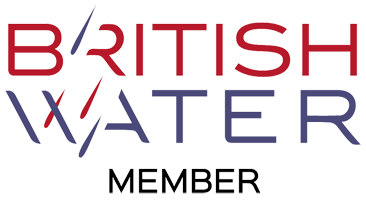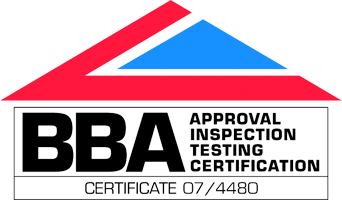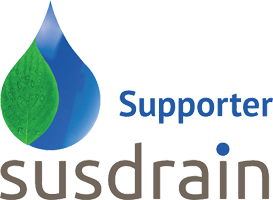Blog Archives
SuDS tips #3: Designing low-maintenance solutions
A qualified civil engineer, Stuart Crisp has been at the forefront of construction and a specialist in drainage systems for over 35 years. He has contributed to the development of numerous British and International Standards and industry specifications and was a member of the project steering group for CIRIA C753 The SuDS Manual. In this regular series of articles, Stuart considers the different challenges facing designers and installers of below ground SuDS attenuation systems. This month covers the subject of inspection and maintenance.
When designing a stormwater attenuation system, sometimes too little attention is paid to cleaning and the costs of ongoing maintenance. System maintenance is essential to ensure that the intended performance is retained throughout the service life and that the risks of flooding and pollution are avoided.
This vital part of asset management can be overlooked at both the design and procurement stages, as the choice is often based on the incorrect assumption that all below-ground attenuation systems are equally easy and low-cost to maintain.
However, this is not the case. For example, because of their structure, stormwater attenuation crates are difficult to get access into the body of the tank for cleaning and require upstream silt removal to prevent a downstream build-up of material within the tank body. Whilst large diameter pipes are easier than crates to access, they too require upstream intervention for silt and hydrocarbon removal.
Both pipes and crates are therefore dependent on the additional expenditure and maintenance of an upstream silt separation and removal system. If silt gets into the storage tank, it can compromise the flow path and reduce the storage volumes – eventually causing the whole system to fail.
But that’s not all. Silt particles can carry pollutants and if these get into the storage tank, they may flush downstream and result in water quality breaches, pollution, and fines.
Crates and pipes, therefore, depend heavily on expensive upstream pre-treatment systems which, together with the attenuation tank, require regular inspection and maintenance. Conversely, the ADS StormTech stormwater attenuation system may not require additional upstream pre-treatment, therefore reducing capital and operational costs.
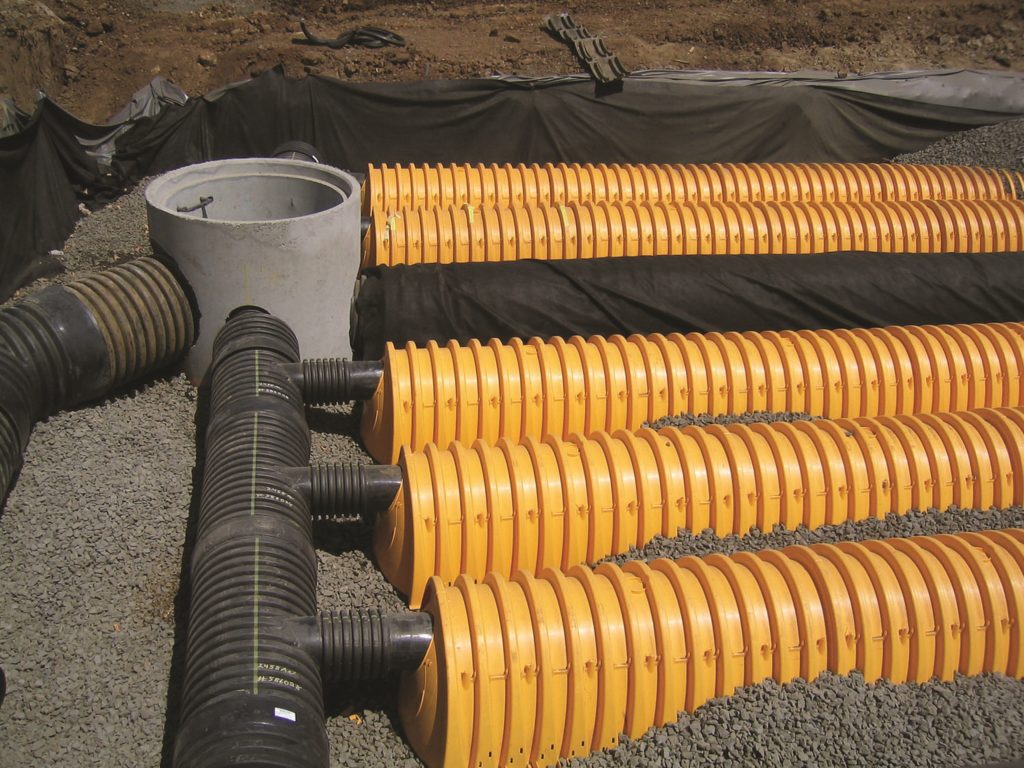
This is because ADS StormTech is engineered to provide an efficient, durable, low-maintenance solution for commercial, residential, industrial, and infrastructure installations. A key part of this is the unique Isolator Row, a ‘free’ built-in water quality treatment device designed to remove silt, sediment, and polluting material flushed off the surface during rainfall. Isolator Row is “sacrificial”, meaning that other StormTech chambers within the system are protected from solid particles and pollutants in the runoff entering, and they will not require any cleaning during their service life. This keeps maintenance to a minimum. Furthermore, Isolator Row has been independently tested by universities and respected industry bodies, including NJCAT, and validated to remove over 80% of Total Suspended Solids (TSS) plus metals, hydrocarbons, phosphorus, nitrogen, and other surface water pollutants. Isolator Row, as an integral part of the StormTech system, is recognised by many authorities as a water quality treatment device.
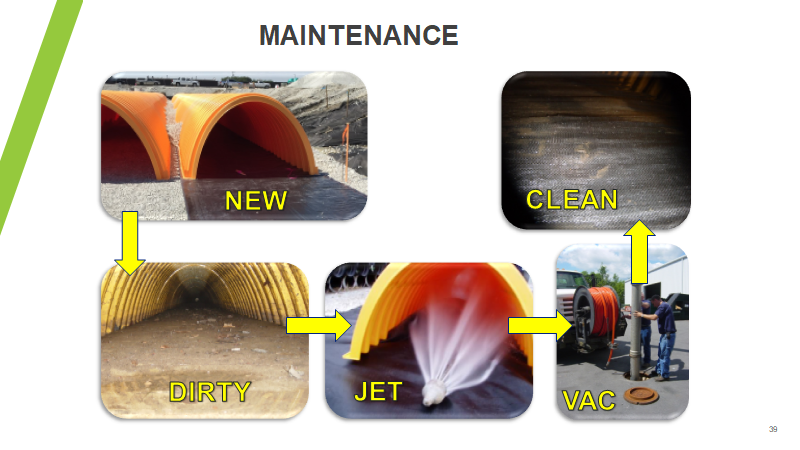
After many years of successful use in over 40,000 installations worldwide, Isolator Row has been proven to need cleaning on average once every 3-7 years, depending on the nature of the installation, using standard sewer cleaning equipment, saving asset owners both time and money in stormwater system maintenance.

Stuart Crisp is UK Manager for Advanced Drainage Systems (ADS). ADS is America’s largest manufacturer of thermoplastic corrugated drainage pipes and a specialist in water management systems. StormTech has a long and successful track record with over 40,000 below-ground SuDS attenuation system installations using in excess of 2.5m units.
Originally published in Water magazine, May 2022
SuDS tips #2: Efficient SuDS Systems depend on Effective Design
A qualified civil engineer, Stuart Crisp has been at the forefront of construction and a specialist in drainage systems for over 35 years. He has contributed to the development of numerous British and International Standards and industry specifications, and was a member of the project steering group for CIRIA C753 The SuDS Manual. In this regular series of articles, Stuart considers the different challenges facing designers and installers of below ground SuDS attenuation systems. This month covers speed and efficiency of construction.
Everyone knows that time is money. However, there’s rarely been such pressure on build time.
Sites are starting late. COVID 19 and Brexit has created labour shortages and manufacturers are struggling to meet demand. And with Britain now officially 6% wetter than in the previous 30 years, weather-related delays are only going to increase – particularly at this time of year. It’s no surprise that across the industry, site programmes are impacted, and contractors are struggling to meet deadlines and avoid penalty clauses.
Considering the speed of installation of the SuDS system at the design stage, can make life significantly easier for clients and contractors alike.
With large diameter pipes, site logistics, transport movements and storage space need to be factored in. Pipes are not the most efficient in terms of the amount of attenuated storage that can be achieved per delivery, and the footprint area required for a given attenuated storage volume is usually greater than most other forms of proprietary solution.
Vaulted systems can be slow to construct, and whilst geocellular crates are often quicker to install, difficulties with maintenance and the need for reliable pre-treatment often count against them. New to the UK, ADS StormTech chambers are fast and easy to work with, often requiring no mechanical lifting. They also provide easy access for inspection and are simple and low cost to maintain.
An important consideration in a drainage system is managing the hydraulic requirement against the available footprint area and construction depth. Traditionally, the flexibility of geocellular crates has made them a popular choice for tight footprints. However, ADS StormTech chambers are available in a range of sizes; the larger size chambers can accommodate the required attenuation volume in asmaller footprint, and the smaller chamber sizes can enable shallow construction depths in situations with high groundwater levels, minimum cover depth below traffic loads and shallow outfalls.
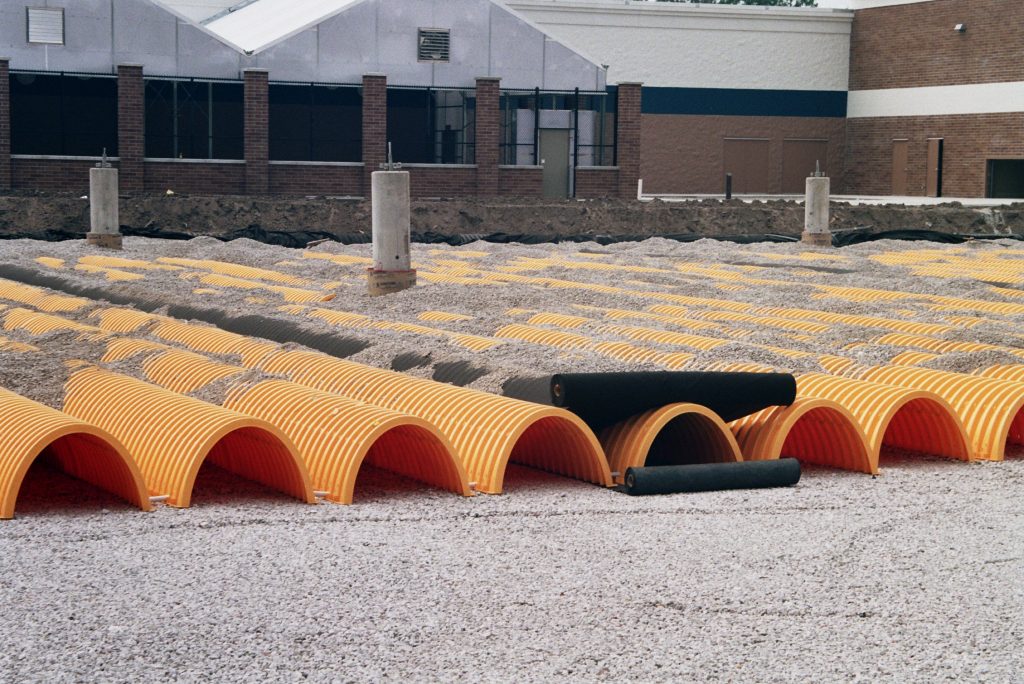
More flexible systems, such as ADS StormTech, are even able to maintain the necessary hydraulic flow around obstacles such as lighting columns.
The difference is particularly noticeable when it comes to more difficult terrain, especially when obstacles, such as lighting columns, below ground utilities and other structures need to be accommodated. Whilst solutions such a permeable block paving remain viable, large diameter pipes, geocellular crates and vaults are often unable to easily maintain continuous hydraulic flow through the system. StormTech chambers, are highly adaptable and can be configured around obstacles and afford multiple inlet and outlet positions. Standard pipe manifolds, manhole & access chamber inlet/outlet structures and flow controls can be used.
Whilst it’s perfectly possible to accommodate such terrain within a more traditional system, it can add time and complexity at both the design and installation stages. More flexible solutions may exist to optimise the design, improve efficiency and performance.
It’s important that the designer takes all these factors into consideration and is fully aware of the product types available and the pros and cons of each. An informed decision can then be made, fully understanding how the choice of system will impact on installed cost, performance, efficiency, buildability and maintenance.

Stuart Crisp is UK Manager for Advanced Drainage Systems (ADS). ADS is America’s largest manufacturer of thermoplastic corrugated drainage pipes and a specialist in water management systems. StormTech has a long and successful track record with over 40,000 below ground SuDS attenuation system installations using in excess of 2.5m units.
Originally published in Water magazine April 2022
